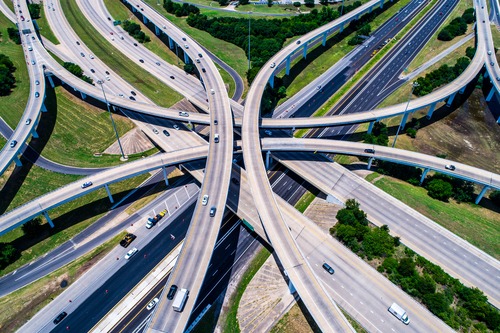
The 2021 report card on America’s infrastructure from the American Society of Civil Engineers (ASCE) reflects slight progress in terms of policies and investment, lifting the infrastructure GPA to a C-, the highest grade in 20 years.
Every four years the ASCE examines 17 different categories of infrastructure and assigns the United States an overall grade. This year was the first time the nation’s infrastructure has been graded higher than the D range, officials with the group said.
For most categories – aviation, dams, hazardous waste, inland waterways, levees, public parks, road, schools, stormwater, transit and wastewater – the grades remained in the D range. For bridges, drinking water, energy and solid waste, grades were in the C range. Only rail and ports received grades in the B range.
The group attributed the improvement to more investment and attention from the public on the country’s infrastructure.
“The elected officials and members of the public who have improved infrastructure policy and supported additional funding are applauded. We’re seeing the benefits of this action in drinking water, inland waterways, and airports. The private sector has invested in the electric grid, freight rail, and more,” the report said.
But problems still remain. The maintenance backlog is an issue preventing infrastructure categories from moving towards more resiliency. ASCE estimated that the investment gap to get each infrastructure category to a state of good repair has grown from $2.1 trillion over the next 10 years to $2.59 trillion.
And in some categories, a lack of data and information in areas like schools, levees and stormwater, prevents elected leaders from making good decisions on what infrastructure to invest in.
Increased investments from state and local leaders, as well as more federal funding, have helped move the needle forward, the group said.
Substantial hurdles towards progress remain, however.
“Importantly, the COVID-19 pandemic’s impacts on infrastructure revenue streams threaten to derail the modest progress we’ve made over the past four years. In addition, many sectors and infrastructure owners are learning what it will take to make our communities climate resilient as we grapple with more severe weather. Meanwhile, many of our legacy transportation and water resource systems are still in the D range. These infrastructure networks suffer from chronic underinvestment and are in poor condition,” the report said. “We’re headed in the right direction, but a lot of work remains.”
During an online presentation about the report card, U.S. Rep. Jim Clyburn (D-SC) said he’d like to see the report card expanded to include broadband internet access.
“I’m hoping that we can broaden our definition of infrastructure. In the beginning of the internet, we called it the information highway,” he said. “And I’d like to see that become a part of our infrastructure. Broadband access is going to be key to rural America in the 21st century, just like electricity was key to rural America in the 20th century.”
Clyburn said that without expanded investment into infrastructure, the country faced creating new pockets of poverty.
The group also focused on resilience in the infrastructure, as the country focuses on the Biden administration’s “Build Back Better” campaign.
Utilizing new approaches, materials and technologies could ensure our infrastructure can withstand and recover from natural and man-made hazards, the group said. Extreme weather conditions, such as the recent cold snap in Texas and the hurricanes in Louisiana, point to a need to plan for and prepare for more severe weather.
Resilience has been what most people in infrastructure have been talking about for years, said John Barton, senior vice president with HNTB Corp. Now, thinking about resilience is more important than ever.
“Hundred-year events are happening every other year now” Barton said. “The conversation is shifting.”
To do this, Barton said, infrastructure planners and designers need to focus on asset management and risk assessment. Without knowing what infrastructure assets you have, you can’t know what needs the most attention.
Carol Haddock, director of the Houston Public Works, said the infrastructure in her city has seen challenges, more than just the recent snowstorm.
“For the past two weeks, Houston Public Works dealt with an unprecedented storm,” she said. “Over the past decade in Houston, in 2011 we were dealing with a drought, when Houston is known for flooding. We had another cold snap five years ago, but not as extreme as the most recent one… Our averages aren’t changing as much, but the extremes are.”
Additionally, the city’s rapid growth is putting a strain on a system built 30 or 40 years ago, she said, leaving Houston with an infrastructure system not built to withstand the weather extremes or man-made challenges.
Dr. Shawn Wilson, secretary of the Louisiana Department of Transportation, said that moving forward, not only will local, state and federal leaders need to be more thoughtful of the economic uncertainty facing the nation, but will also need to be more mindful of equity in planning, designing and implementation of any infrastructure investments.